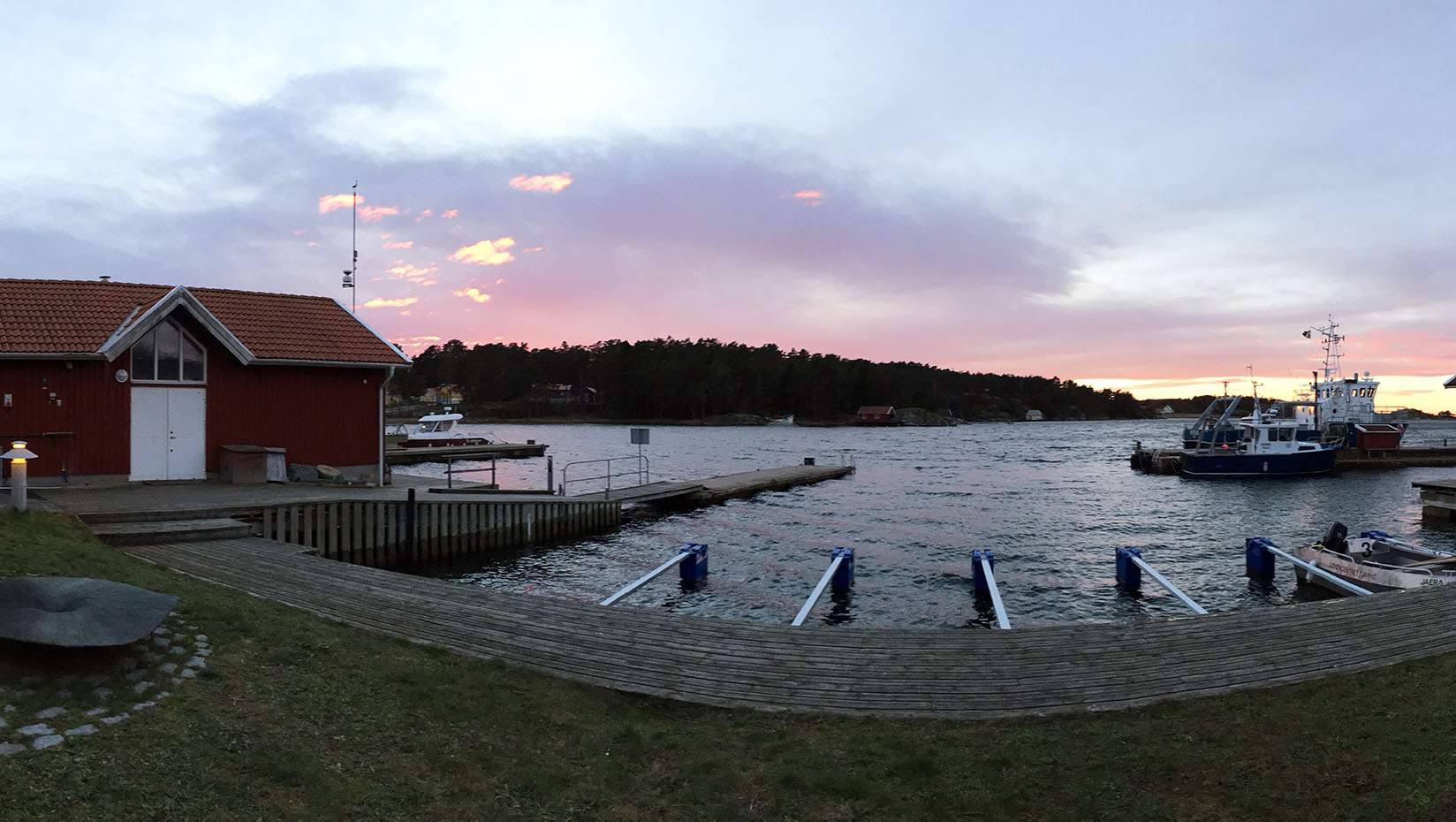
In Sweden, Waller shares in-depth knowledge of cold-water corals
Rhian Waller’s front yard is a 660-foot-deep fjord.
The long, narrow sea inlet nestled between cliffs in Tjärnö, Sweden is home to a host of marine species, including seabirds and harbor seals.
And corals.
Until January 2020, the fjords also will be areas of exploration for Waller, a University of Maine marine scientist based at the Darling Marine Center in Walpole.
Where she’s stationed, adjacent to the country’s first national marine park, she has access to Lophelia pertusa corals, which are pink, yellow or white.
“Usually I work with preserved samples in jars,” Waller says. “Here, I get to work with live corals and do experiments I could only dream of with most deep-sea species.”

Waller’s a visiting researcher at the University of Gothenburg, based at the Sven Loven Center. She’s in Sweden as part of the Marie Curie Mobility for Regional Excellence 2020 (MoRE2020) program that encourages researchers from various countries to exchange knowledge and skills with scientists in the Gothenburg region of Sweden.
The cold-water coral expert has participated in dives all over the world, including the Gulf of Maine. In 2016, the 100th anniversary of the National Park System, Waller led the first-ever extensive expedition of underwater fjords in Glacier Bay National Park and Preserve in Alaska.
She’s also a fellow in the international Explorers Club that encourages scientific discovery during exploration of land, sea and space. And in 2013, the celebrated ice water diver was featured in National Geographic as a 21st-century risk-taker in the “New Age of Exploration” exhibition.
She and colleagues at the Sven Loven Center use a Remotely Operated Vehicle (ROV) to capture video and collect the corals that build spectacular structures. Some Lophelia pertusa reefs have been estimated to be about 8,000 years old.
For a number of species — crabs, lobsters, starfish, snails and large fish, for example — Lophelia pertusa ecosystems provide protection from predators and a place to reproduce and find food.
“They all use these structures for feeding, raising young and even laying eggs,” Waller says.
The corals live at considerable depths but they’re still impacted by human activities. Bottom-trawling fishing equipment, for instance, crushes the coral.
Bottom trawling is rare now in the area of Sweden where Waller is located, but because the corals grow just a few millimeters a year, the 115-foot reefs take a long time to rebound. In some areas in Sweden, they’re classified as extinct.
While not a lot is known about how climate change affects these corals, Waller’s project could change that. She’s examining whether they are affected by higher ocean temperature and lowered salinity (due to more freshwater runoff).
The slow-growing hard corals are filter feeders. When floating plankton or krill brush up against polyps’ tentacles, they’re speared with tiny pointed barbs all along the tentacles. The tentacles then pull the prey into the polyps’ mouths.
Because the corals are fixed in one place, larvae are essential to maintaining healthy populations. Colonies — which are either male or female — release sperm and eggs, respectively, into the ocean. When larvae settle on the seabed, they metamorphosize, develop polyps and start new colonies.
“There are populations that aren’t seeing any regrowth,” says Waller. “Maybe this is because of lack of larvae to the area.”
Waller takes larvae from male and female corals (she learns the gender of the coral in the lab by opening polyps) to assess how environmental stressors, including temperature and salinity, affect the vulnerable larvae of the habitat-forming species.
She’s investigating whether corals under climate stress in the Swedish-Norwegian fjord region can fertilize and whether larvae under climate stress grow and migrate normally through the water column.
Waller’s findings could produce information vital to effective marine management and conservation measures in the area.
Just like the deep-sea corals Waller has examined in the Gulf of Maine, Lophelia pertusa are vital to healthy ocean ecosystems because of the abundance of life they support.
“When these corals are removed or die off, all the other organisms that use these habitats, including commercially important or protected species, are removed as well,” she says.
In addition to research, Waller and her husband — a software engineer who works remotely — are enjoying exploring the area with their 3-year-old and 1-year-old sons.
“It’s been, and is going to be, such a wonderful experience for the kids,” she says.
The boys’ preschool class includes seven other children from Tjärnö Village, which has a population of about 500. They sled and have picnics on the beach.
“The preschool teachers only speak Swedish in class, so it’s a great learning opportunity for them. My husband and I will need to learn Swedish so we know what they’re talking about,” she laughs.
Contact: Beth Staples, 207.581.3777
